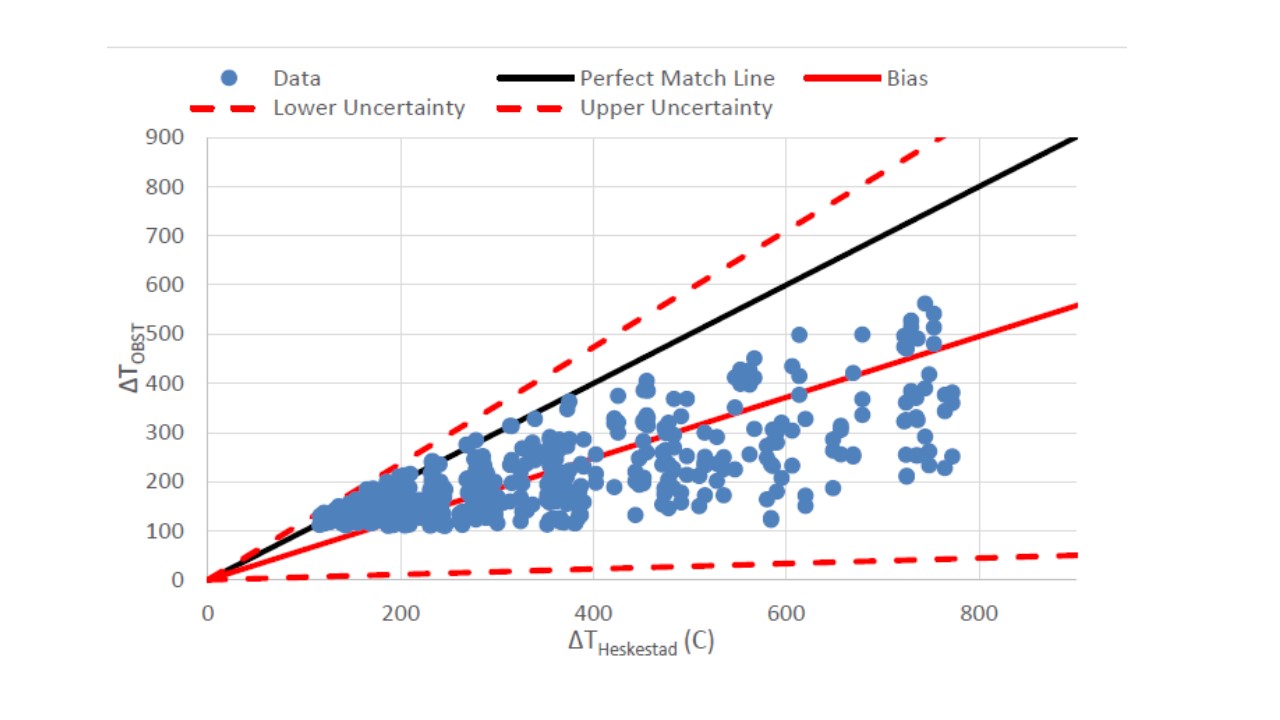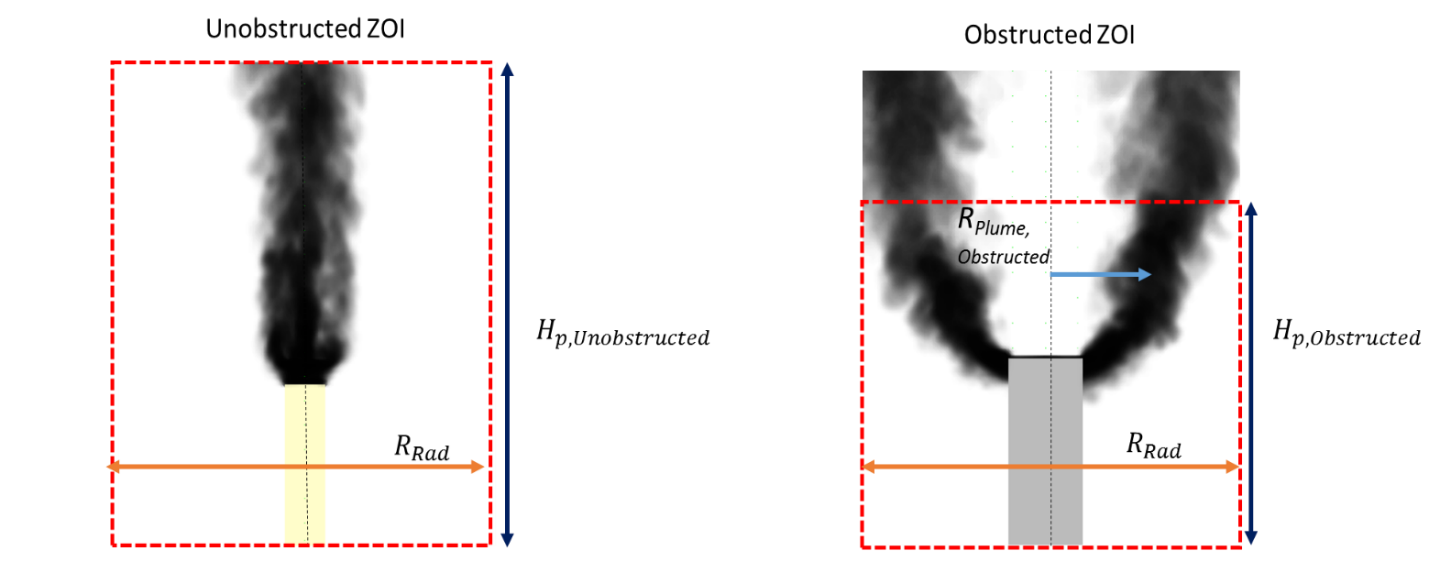Difference between revisions of "Obstructed Plume"
| Line 6: | Line 6: | ||
RACHELLE-Fire presents methodology to correct for the ZOI due to the obstructed plume effect encountered in electrical enclosures. | RACHELLE-Fire presents methodology to correct for the ZOI due to the obstructed plume effect encountered in electrical enclosures. | ||
| − | [[File: OPlume1.png]] | + | [[File: OPlume1.png |THis is the caption]] |
A review of past studies and plume theory was conducted, and FDS simulations were conducted. | A review of past studies and plume theory was conducted, and FDS simulations were conducted. | ||
Revision as of 15:08, 13 November 2018
Chapter 5: Correlation of Obstructed Plume Models with Heskestad Plume Predictions
The Heskestad plume correlation is typically used for unobstructed plume simulations and modified to account for changes in plume temperature due to an obstruction. This modification is estimated through a comparison of the results of fire model simulations against the existing Heskestad plume correlation. The software used to simulate and estimate fire plume temperatures subject to obstructions in this study is FDS Version 6.0.1.
RACHELLE-Fire presents methodology to correct for the ZOI due to the obstructed plume effect encountered in electrical enclosures.
A review of past studies and plume theory was conducted, and FDS simulations were conducted.
Geometric FDS configurations
- Room size ~ 16½ ft. square, 20 ft. height
- Cabinet size = 1, 2, 3, 4 ft. square, 7½ ft. height
- FDS grid size ~ 1½ in. cube
Using FDS, 156 simulations were performed
- 39 unobstructed
- 117 with obstructions
Fire scenario configurations varied
- HRR
- Fire diameter
- Fire base height, within the cabinet
- Number of cabinet walls
Chapter 6:
Correction to Plume Zone of Influence due to Obstructed Plume Effects
An obstructed plume bias, B = 0.62, which is equivalent to a reduction of 38% for estimating the plume temperature rise is recommended for use.
In other words, the ZOI credit for obstructed plume offers a reduction in vertical ZOI of 24%.
The thermal radiation (horizontal) ZOI extends farther than the plume will be shifted by the top obstruction. This means that horizontal ZOI is unaffected by the obstructed plume.
The obstructed plume correction does not apply to:
- Electrical enclosures where more than 5% of the total top surface area is open (sealed penetrations do NOT count as openings)
- Fires with a base elevation located below the half height of the enclosure
- Configurations that include burning of secondary combustible materials
- The analysis that determines the hot gas layer (HGL) damage
- The evaluation of the horizontal thermal flame radiation ZOI
This is ONLY applicable for electrical cabinet ignition sources.




